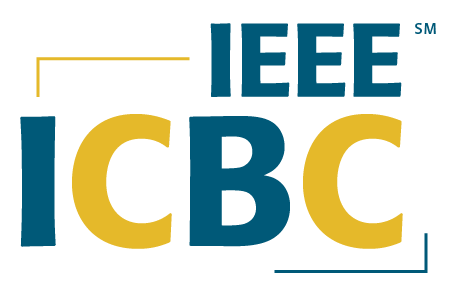Lightning network: off-chain transactions and the future of decentralised value transfer
Mariusz Nowostawski and Rene Pickhardt (Norwegian University of Science and Technology, Norway)
Abstract
Blockchain and related technologies have enabled new and interesting ways to facilitate value transfer. Most notably, through direct, potentially privacypreserving, peertopeer exchange of value. The value transfer is one of the key components of Bitcoin. There are two fundamental aspects related to value transfer: scalability (throughput, latency, participants), and privacy. We will focus on one specific technology that addresses both for value transfer: Lightning
network [1]. Similarly to decentralised blockchain systems, Lightning Network consists of the protocol layer (Lightning protocol), as well as the network of nodes (Lightning network). In contrast to other decentralized blockchain systems the Lightning protocol stack operates as Layer 2 on top of an existing blockchain protocol, such as Bitcoin. The concept of payment channels and offchain transactions have been in the conceptual development since the first implementation of the Bitcoin protocol itself. Its origin can be traced to the concept of payment channels from Bitcoin 0.1. In recent years, the concepts have been refined and the offchain payments have been not only in active development, but have been actually deployed in the Bitcoin mainnet. The motivation for this workshop is to explain the fundamental problems, as well as the current state of the art in solving those problems. It is to bring a better understanding of what Lightning is and how it works, what is the current state of the protocol development and deployment, and what work is still to be conducted.
Keywords: scaling blockchains, smart contracts, lightning network, bitcoin, offchain transactions, layer 2 solutions
Description
This workshop will provide general background as well as the recent innovation in the context of offchain payments, and transaction scalability of traditional blockchain systems such as Bitcoin. The talk will address the most recent protocol innovations as well as challenges and the network topology research, including work on autopilots for managing emerging network properties. We will investigate how the strong privacy properties of the Lightning network protocol impose challenges on routing and path finding [2]. We will present cutting edge innovations in both, the protocol layer, as well as in the architecting of the emergent/dynamic properties of the network [3]. It will use materials from recent developments from late 2018, which makes it novel, relevant and cutting edge. As one example we mention the American Call Option Problem discovered by ZmnSCPxj in late 2018 [4]. This poses an open problem related to the fact that cross chain atomic swaps which are technical possible in routing payments create American Call Options, which are free of charge and have interesting game theoretical implications.
We will address the following technical foundations of the Lightning network. While being core building blocks they continue to yield a variety of research challenges:
- Construction of payment channels: The current asymmetric mechanism to construct a
payment channel with the help of a Revocable Sequence Maturity Contract is explained.
Yet in Mai 2018 Christian Decker et. al. came up with eltoo [5] which is a symmetric
payment channel protocol which does not have the overhead drawbacks and temporal
limit as the symmetric protocol based on invalidation trees [6]. - Atomic payments and crosschain routing: We introduce Hashed Time Lock
Contracts as a mean to allow atomic transfer of value through several payment
channels. As channels don’t have to use the same base layer this the basis for atomic
swaps of different crypto currencies. - The gossip protocol: We will give a short overview of the gossip protocol that helps
the peers in the network to discover the topology of the network and allows them to
decide for payment routes when transacting value via Hashed Time Lock Contracts
(HTLC). - The routing protocol: We introduce the SPHINX mix format [7] that is being used in the
routing layer to set up and fulfill the Hashed Time Lock Contracts. This part will be of
particular interest to understand the privacy properties of the Lightning network.
Five currently unsolved problems are of particular interest:
- Path discovery. Since for reasons of privacy the Lightning network uses source based
routing and only the capacity of payment channels are publicly known path discovery is a
problem with uncertainty. We describe the issues with currently proposed solutions like
Atomic Multipath Routing and Autopilots - Atomic crosschain routing. The pseudonymous Lightning network protocol developer
ZmnSCPxj discovered in 2018 that atomic payments routed in a chain of Hashed Time
Lock Contracts allow routing nodes that allow chross chain payments to create an
American Style Call Options. Making use of this for monetary gains might distract the
operation of the routing progress. - 1 Million Channel Challenge. We will also introduce the challenges with the gossip
protocol resulting in the 1 Million Channel Challenge which was proposed by the
Lightning network lead developer Rusty Russell at the beginning 2019 [8]. The proposed
challenge involves also an examination of the current topology of the Lightning network
4.3.2019 IEEE ICBC 2019 – Workshop – Google Docs
https://docs.google.com/document/d/1NKdcgnzcg9TomyjZV9DwwfxT25LUAjLcr9qV11ye-Xs/edit?ts=5c52fb78# 3/11
as well as a simulation to create an artificial Lightning network as an environment for
testing. - Channel maintenance. We will discuss the unsolved problems with backing up channel
state and demonstrate how this problem can be somewhat mitigated when switching to
the symmetric eltoo Payment channels. Related to the issue of maintaining channel state
we discuss the issue of of disk space related to a watchtower protocol and why it could
not become part of BOLT1.1. - Autopilot. Emerging network properties (such as topology, connectivity, centrality
measure) and autopilot heuristics to shape the most desirable properties: security,
privacy, centralisation, network efficiency and liquidity.
Overall the timeliness of the above topics results from the fact that the Lightning network as the
designated scaling solution of the Bitcoin community is still at its infancy. In November 2018 new
protocol enhancements called BOLT1.1 have been agreed upon while the drafting process of
this protocol version is ongoing. Already during these discussions it became clear that some
challenges like a watchtower protocol should only be addressed in BOLT2.0. This ongoing
and dynamic development demands for close scientific overview and feedback from the
research community.
Content Schedule
- 30 Minutes Cryptographic constructions for the lightning network. Revocable Sequence
Maturity Contracts (RSMCs) for duplex micropayment channels and Hashed Time
Locked Contracts for atomic trustless transfer of value through a network of
micropayment channels. - 30 Minutes Introduction to the Basics of Lightning Technology (aka BOLT) the protocol
standard including including the SPHINX mix format used in the onion routing and the
Noise Protocol used for encrypted communication as well as the gossip protocol. - 30 Current technical and security challenges [10], Known (and unknown) attack vectors,
the future of automated control of emergent network properties/autopilots. Topics will
include, but are not limited to: American Style Options, Atomic Swaps, the channel
capacity and liquidity, autopilots and routing, forensics readiness.
Biographics
Associate Professor Mariusz Nowostawski
Norwegian University of Science and Technology, NTNU
Mariusz Nowostawski is a Programmer, Computer Scientist, and Teacher who is an Associate
Professor at the Norwegian University of Science and Technology. He was previously an
academic lecturer at the University of Otago, New Zealand. The focus of his MSc studies was
artificial intelligence (AI) and machine learning, while the focus of his PhD research was
4.3.2019 IEEE ICBC 2019 – Workshop – Google Docs
https://docs.google.com/document/d/1NKdcgnzcg9TomyjZV9DwwfxT25LUAjLcr9qV11ye-Xs/edit?ts=5c52fb78# 4/11
autonomous systems and computational modelling of the biological process of life. Mariusz is
passionate about selforganising systems, adaptive and autonomous computation.
Mariusz has worked on highend networking applications on GPUs and multicore systems with
Sun Microsystems and Oracle. He is currently involved in forensics research with Europol,
Bitcoin anonymity, and Cryptocurrencies. He teaches game and graphics programming, mobile,
peertopeer and blockchain technologies. A hardcore explorer and thinker, Mariusz also enjoys
rock climbing, paragliding and long distance running.
PhD candidate, Rene Pickhardt
Norwegian University of Science and Technology, NTNU
Rene Pickhardt is an independent lightning network protocol developer. He contributed to
Blockstreams clightning repository and was one of two independant lightning network protocol
developers to be invited to the 2nd Lightning Network Developer summit which took place in
November 2018. Rene Pickhardt runs a technical youtube channel about the lightning network
and is one of the top lightning network contributor to bitcoin.stackexchange.org. Starting in 2018
he became public about his involvement to the Lightning network protocol and has since then
been given several presentations and workshops for bitcoin enthusiasts and companies.
Rene holds a diploma in mathematics and has founded a startup prior working for 6 years in
acemia as researcher in the field of machine learning and data science. He has a ten year track
record in education.
REFERENCES
[1] Poon, Joseph, and Thaddeus Dryja. “The bitcoin lightning network: Scalable offchain instant
payments.” See https://lightning.network/lightningnetworkpaper.pdf (2016). Also: Lightningrfc
https://github.com/lightningnetwork/lightningrfc
[2] Prihodko, Pavel, et al. “Flare: An approach to routing in lightning network.” White Paper
http://bitfury.com/content/5whitepapersresearch/whitepaper_flare_an_approach_to_routing_in_lightning
_n etwork_7_7_2016. pdf (2016).
[3] Pickhardt, Rene “Shaping the Future of the Lightning Network with Autopilots” LightningHackdayNYC
(2018), https://youtu.be/FGxFd944jMg?t=8425
[4]ZmnSCPxj, American Call Options Problem (2018):
https://lists.linuxfoundation.org/pipermail/lightningdev/2018December/001752.html
[5] eltoo: A Simple Layer2 Protocol for Bitcoin
https://blockstream.com/eltoo.pdf (preprint, 2018)
[6] Decker C., Wattenhofer R. (2015) A Fast and Scalable Payment Network with Bitcoin Duplex
Micropayment Channels. In: Pelc A., Schwarzmann A. (eds) Stabilization, Safety, and Security of
4.3.2019 IEEE ICBC 2019 – Workshop – Google Docs
https://docs.google.com/document/d/1NKdcgnzcg9TomyjZV9DwwfxT25LUAjLcr9qV11ye-Xs/edit?ts=5c52fb78# 5/11
Distributed Systems. SSS 2015. Lecture Notes in Computer Science, vol 9212. Springer, Cham
https://www.tik.ee.ethz.ch/file/716b955c130e6c703fac336ea17b1670/duplexmicropaymentchannels.pdf
[7] Danezis, George, and Ian Goldberg. “Sphinx: A compact and provably secure mix format.” Security
and Privacy, 2009 30th IEEE Symposium on. IEEE, 2009.
See: https://cypherpunks.ca/~iang/pubs/Sphinx_Oakland09.pdf
[8] Russel, Rusty, 1 Million Channel Challenge (2019):
https://medium.com/@rusty_lightning/proposalthemillionchannellightningprojectd8c34666d6d4
[9] Dmytro Piatkivskyi, Stefan Axelsson, and Mariusz Nowostawski. “Digital Forensic Implications of
Collusion Attacks on the Lightning Network.” IFIP International Conference on Digital Forensics. Springer,
Cham, 2017.
[10] Tøn, Jardar. “An analysis of onchain Lightning Network transactions in the Bitcoin blockchain.” MS
thesis. NTNU, 2018. Supervisor: M. Nowostawski. See:
https://brage.bibsys.no/xmlui/handle/11250/2502560
| PATRONS |
 |
 |
 |
| PLATINUM | GOLD | GOLD |
 |
 |
| SILVER | SILVER |
| BRONZE | BRONZE | BRONZE |
| SUPPORTERS |


